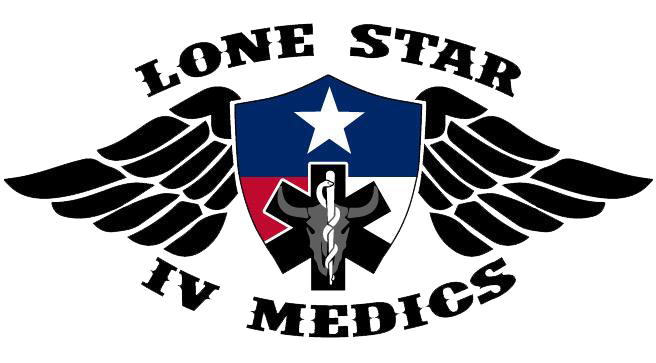Kevin Sayer, Dexcom’s chairman president and CEO, was at J.P. Morgan’s annual healthcare conference in San Francisco earlier this week to present the latest financial results as well as describe what’s ahead for the company. The San Diego medical device company has emerged as the leader in the continuous glucose monitoring space.
Later, he sat down with MedCity News for an interview. One of the most notable exchanges involved his vision to bring the company’s CGM system directly to consumers.
Here is a slightly edited version of the salient portions of the interview:
MedCity News: Dexcom and Livongo are partnering to bring diabetes data to the Livongo platform. Why did you choose Livongo and not other players in the same market, Omada Health for instance?
Sayer: We have always had an open architecture. We partner with numerous companies. We’re excited about our partnership with Livongo because they have such a very large patient base. They really have the largest base that there is. And this partnership is a data partnership….
We are not exclusive with them. We’ve worked with Omada before and they recently announced that they are working with Abbott, so they are working with both of us. We anticipate working with them and numerous others as well. We’re just excited about Livongo.
MedCity News: You said they have a large patient base but it’s made up of Type 2 diabetes patients. Type 1 and Type 2 are completely different beasts. Do Livongo coaches have the expertise to talk to your Type 1 diabetes patients?
Sayer: I don’t know. But don’t plan on our device to be only used by people with Type 1 diabetes either. There’s a possibility that if through the Livongo program a Type 2 diabetes patient can get access to a CGM, there can be great as well.
MedCity News: That’s something that retiring Medtronic CEO Omar Ishrak has said as well. Because CGM has been proved to offer better control over glucose levels, that’s the way forward for Type 2 diabetes patients. But how do you get at them because there are some concerns that health and wellness programs don’t really work well?
Sayer: I would tell you that until you have the right information, you can’t provide [the value]. If a patient sticks their finger four times a day for a year, you have less than 1,500 data points. Now those data points come from around the same time each day – mealtimes, bedtimes. If that patient is on a Dexcom CGM, then you get 2,800 datapoints over the course of a week fulltime. You see what happens to them all day long. You can make a much more educated decision on how to help a person with Type 2 diabetes with a CGM than you’ll ever make on fingersticks.
We are taking a four-pronged attack at this Type 2 population.
We are working with UnitedHealth Group and we have been working with them for years. Then we have a program with Intermountain Healthcare and they are an integrated system so they control all the costs and they see everything. They did a program where they put 49 people on CGM and 50 regular treatments for six months. Based on their data, their annual cost savings per year for patients using CGM was $5,000 through reduced doctor visits, reduced lab tests reduced hospitalizations, across the board better healthcare.
Usually, when we meet with people, we’re always selling. I didn’t have to speak. I just sat and they told me that how great this was and the thing that was really interesting was how happy the patients were because somebody with Type 2 diabetes is told, “You weigh too much, you eat too much, you don’t exercise enough, take your meds” and off you go.
Well, with CGM you can see, ‘Yeah I really do eat too much.” Or “If I take a walk after lunch “If I take a walk after lunch, look how much lower my glucose values are.” They can actually make actionable changes based on real data.
So we’ve got the payer, we got the integrated health network and then we got the programmatic approach with Livongo. The fourth place where we will go, and we are not there yet, is at some point in time, we’ll launch a direct-to-consumer effort. [emphasis added]
MedCity News: I was thinking about that. Why aren’t you running ads on TV?
Sayer: Well, because most medical devices aren’t used by patients until they are paid for.
MedCity News: True but then you can take the pharma approach — ask your doctor …?
Sayer: We are not ready. We didn’t have the capacity as far as manufacturing to do an initiative like that in 2019. But as 2020 unfolds we will attempt to more than likely pilots of that nature but certainly, there’s a direct-to-consumer play that would be very good here.
We have to mull that through our whole pricing structure — do we sell it for cash? I am just throwing out numbers here. If we go to sell to patients for cash — for $25 — and the insurance company is paying $50, the insurers will be like, “Wait a minute.” Now we’ve created a problem.
It isn’t just the physical product that we sell that we would launch a direct-to-consumer program with. We have to change the software as well. Those patients would want a different experience than what we are offering today where we have alerts, alarms and sharing trends. This would be more of insights. This would be like put more activity data in here so you can see glucose level data on top of sleep data and we are looking into what we would want to of that nature going forward.
What partners we would want to pull data from and that’s an ongoing effort at the company. We are not ready to launch this. We are thinking about it. Software is a differentiator. If we can give them an experience that keeps them engaged that works for me.
MedCity News. Let’s talk about patient experience. What was your biggest takeaway from the IT outage you had over Thanksgiving?
There were three takeaways.
The first takeaway was how important it is to all of our patients. This really is a big deal. We knew it was important, but the reaction to it was huge.
If you saw the video I did, we messed up. We moved our server platforms from a smaller server farm to a big Google servers and we did not configure it right and it caused our share system to crash. So Takeaway no. 2 is that we need to be better and more thoughtful when we do things like that.
And the last one is communicating. That’s probably the biggest takeaway on the Dexcom side. We’re such perfectionists as a company that we do not want to say anything unless we know the answer.
But we’re now going to have on our website, at some point of time, kind of like a power gauge — you can go hit this button and you can see how our servers are doing. So if they are down, you will just see on the website.
And then we are going to create the ability through the app for our patients. An individual’s expectation as to how we would handle this is based on how they interact with other companies when there are problems. For example, when your plane’s late, what happens – you get a text. Well, we haven’t built that. We don’t have that. And people think, ‘What do you mean you stupid idiots, you don’t have this?” Well, we don’t and we should so we’ll add to that going forward. Communication is the thing that we did the most wrong.
MedCity News: Can you give us an update on the Verily partnership?
Sayer: A couple of years ago we were making two products with Veirly and we shut one of them down to focus on the one that really is the endgame. What we call our G7 product. The way that partnership worked was that Verily designed all the electronics for that product and we designed it in a method whereby they are very cost-effective.
The whole thing is disposable and throwaway. Very small. I am wearing one and you can feel it over my jacket. [Editor’s note: I feel it and seems to be rectangular in shape and quarter the size of a Juicy Fruit chewing gum. Sayer says it’s half the size of the current G6 sensor].
And their design is complete. So the electronics is done and we are manufacturing that and putting it into the product. While we were working with them together, we laid out manufacturing processes to make this a much more manufacturable and much more streamlined process than anything we have ever done before. We’re now laying out that factory and getting ready to build this. We are going to start clinical studies and pivotal studies in 2020.
MedCity News: But it has taken longer than expected
Sayer: Yes, it took longer than we expected but the delay is worth it because this product is going to change everything for us. Our G6 product has been a wonderful product. You don’t grow as fast as we are growing without having something that solves a serious problem and G6 does.
But when we launched G6, we got caught up in our own – I don’t know what to call it. But FDA approved it early and we sat down and we were supposed to launch it in October. We got approved in March and we were like “Well do we build inventory and wait until October or do we just launch?” and we said, “We have been always able to work through these things. Let’s just go.”
So we launched and guess what. We were not near capacity for a year and a half. We are not going to do that with G7. If we have to wait … we are going to do it that way. Because once it’s happening, no one will buy the old product.
MedCity News: You mean the G7 will cannibalize G6?
Sayer: No, no. We will still use G6 platform for other things and in other geographies. But all the lines are different all the processes are different. Everything is different.
MedCity News: So will you then wait and time your direct-to-consumer launch with that of G7?
Sayer: I don’t think we should wait. I think we should start putting these things in place now and maybe do it on a small-scale basis with G6 to learn with a full roll-out when G7 comes. One of the things we get caught up in medical devices is the next thing and we can wait.
But we should develop these things and get ready now and when G7 comes, drop it in.
Photo: Dexcom











